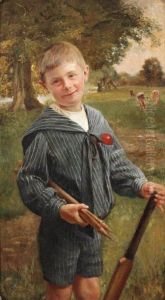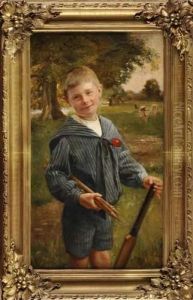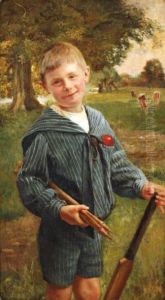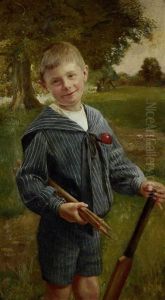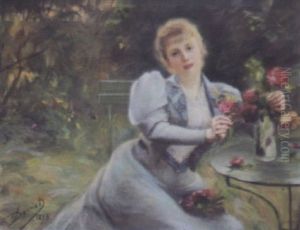Edouard Darviot Paintings
Édouard Darviot was a French painter born on September 18, 1854, in Chalon-sur-Saône, France. He is known for his contributions to genre painting, as well as landscapes and portraits. Darviot showed an early interest in art and pursued his education at the École des Beaux-Arts in Paris, where he was a student under Alexandre Cabanel, a well-known academic painter of the time.
Throughout his career, Darviot was influenced by the changes in the art world, including the rise of Impressionism. However, he maintained a more traditional approach to painting, emphasizing realism and attention to detail. His works often depicted scenes of everyday life, capturing moments of the French bourgeoisie, as well as rural landscapes and scenes from his travels.
Despite living in an era dominated by the avant-garde movements, Darviot remained dedicated to the academic style of painting. He exhibited his works at the Paris Salon, a prestigious annual art event where he received recognition and accolades. His paintings resonated with audiences who appreciated his narrative style and his ability to portray the subtleties of light and shadow.
Darviot's career spanned several decades, during which he created a substantial body of work that contributed to the French artistic heritage. He managed to garner respect from both critics and the public, securing his place in the history of 19th-century French art.
Édouard Darviot passed away on January 1, 1937, in Paris. Although he may not be as well-known as some of his contemporaries, his work continues to be appreciated by art historians and collectors who value the elegance and craftsmanship of his paintings. His legacy is preserved in museums and private collections, where his vision of the world he lived in remains on display.
